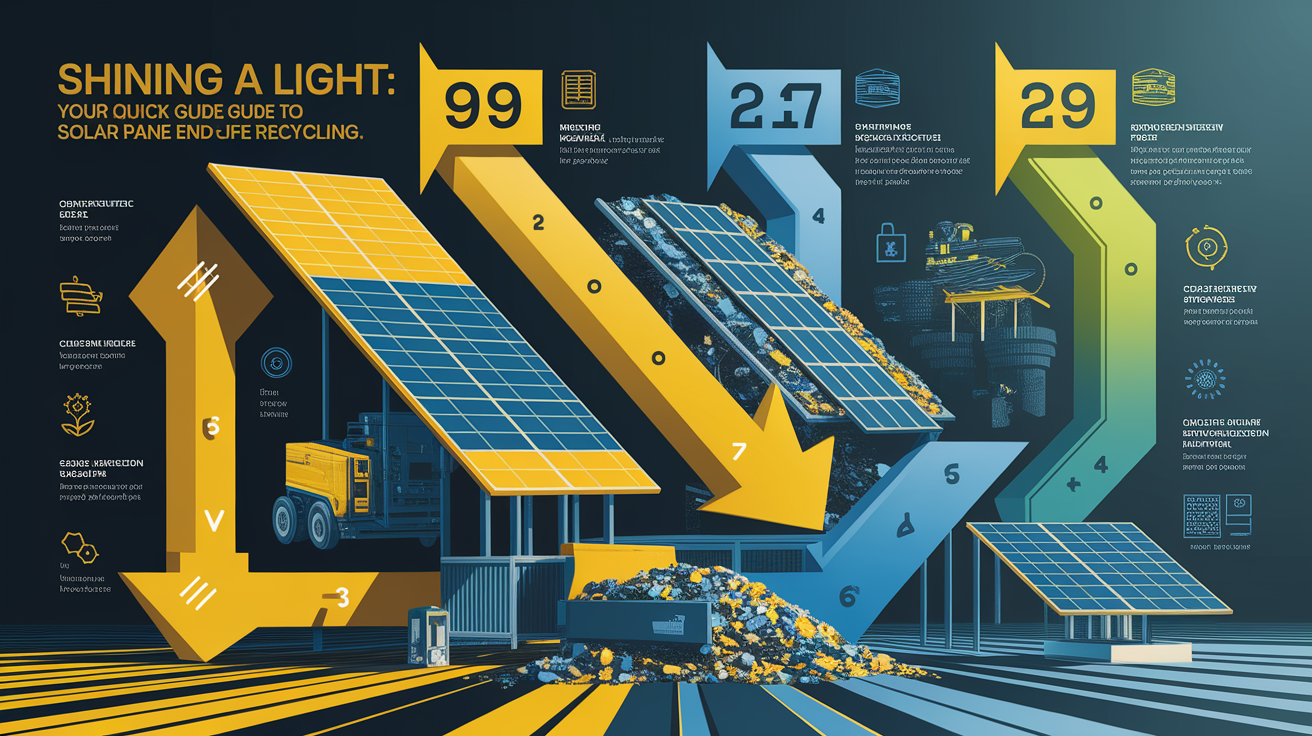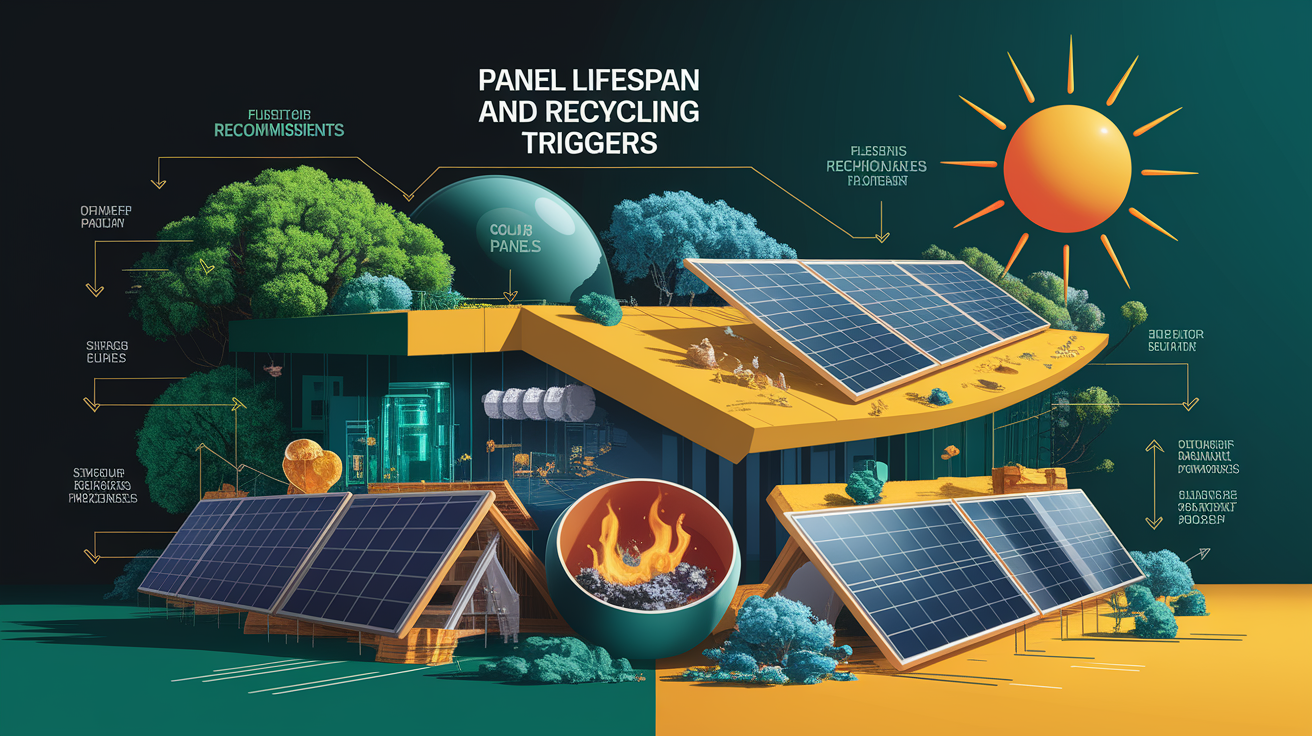Solar Panel Recycling End-of-Life Guide
Shining a Light: Your Quick Guide to Solar Panel End-of-Life Recycling
As solar installations multiply across rooftops and landscapes, addressing what happens at the end of a panel’s service life has become an essential part of renewable energy sustainability. Solar panel recycling ensures valuable components such as silicon wafers, glass, aluminum frames, copper, and even rare metals like silver are reclaimed and reintroduced into manufacturing streams. This not only prevents these materials from entering the landfill but strengthens the circular economy by turning clean energy waste into fresh resources for new photovoltaic products.

Modern recycling methods are designed to recover high-value materials and handle hazardous elements—such as cadmium telluride in thin-film panels—with precision and safety. By recycling photovoltaic panels, owners not only contribute to a more sustainable disposal process but also support the industry’s drive towards zero-waste renewable energy systems.
Panel Lifespan and Recycling Triggers
Most crystalline silicon solar panels have a lifespan of around 25–30 years, although degradation rates vary depending on environmental exposure and manufacturing quality. Annual performance declines of 0.5–1% are typical. Recycling is generally triggered by:

- End-of-life replacement: Panels producing insufficient energy output due to age and wear.
- Damage: Severe weather events, impact damage, or micro-cracks reducing efficiency.
- Upgrades: Transition to higher-efficiency technology or repowering solar farms.
- System decommissioning: Removal of panels during dismantling of entire solar installations.
Understanding the proper solar panel disposal methods ensures compliance with environmental regulations while maximizing the recovery of valuable materials.
Preparing Solar Panels for Recycling
Before sending panels to recycling facilities, proper preparation boosts efficiency and safety:

- Disconnect and decommission: Safely disconnect inverters, mounting systems, and any battery storage units to isolate panels.
- Inspect for hazardous materials: Identify the presence of substances like lead or cadmium telluride so they can be handled under strict protocols.
- Remove external components: Strip aluminum frames and junction boxes, which are easily recyclable.
- Transport securely: Minimize further damage during transit to preserve recovery rates for glass and silicon cells.
This step-by-step approach aligns with photovoltaic waste management best practices, lowering costs while supporting sustainable solar practices.
Recycling Methods and Technologies
The recycling process for solar panels employs several key methods, tailored to panel type:

- Mechanical separation: Automated machinery removes aluminum frames and separates glass—precise glass recycling techniques can recover up to 95% purity.
- Thermal processing: Heat is applied to silicon-based panels to delaminate layers and extract silicon wafers for purification.
- Chemical treatment: Specialized solutions dissolve polymer encapsulants, enabling silver recovery and copper extraction without damaging the base materials.
- Thin-film panel recycling: Shredding and targeted chemical separation retrieve cadmium telluride and other rare compounds.
For a detailed step-by-step breakdown, see solar module recycling processes, which outline mechanical, chemical, and hybrid workflows that improve material yield while reducing environmental impact.
Finding Certified Recycling Facilities
Locating the right recycler is vital for both compliance and efficiency. Certified facilities adhere to industry standards that safeguard against improper handling of hazardous materials and maximize photovoltaic material recovery. Factors to consider include:
- Accreditations: Look for certifications or partnerships with environmental agencies such as the EPA.
- Technology capabilities: Ensure they can process both crystalline silicon and thin-film technologies.
- Recovery rates: Opt for recyclers with proven data on valuable material output.
- Local regulations: Facilities should comply with regional waste management laws for renewable energy waste streams.
Resources such as the certified solar recycler directory can help identify facilities equipped to meet technical and regulatory needs.
Costs, Incentives, and Compliance
While recycling costs typically range from $15–$45 per panel—higher for hazardous material handling—emerging incentives and compliance requirements are shifting the economics. Notable factors include:
- State and national programs: Certain regions offer credits or subsidies for recycling, lowering net expense.
- Manufacturer take-back schemes: Some panel producers reclaim end-of-life products at no cost to the owner.
- Regulatory mandates: Waste disposal laws increasingly require certified recycling for solar panel decommissioning.
Balancing upfront costs with the environmental and regulatory benefits can make recycling a more appealing option over landfill disposal. The future of solar panel recycling points toward falling costs as technology and scale improve.
Sunset Summary: Last Rays of Recycling Guidance
Recycling solar panels is no longer a niche consideration—it’s a core component of responsible, sustainable solar technology lifecycle management. By understanding lifespan triggers, preparing panels correctly, choosing the right recycling method, and working with certified facilities, owners can ensure that end-of-life photovoltaic panels re-enter the supply chain instead of the waste stream.
Key takeaways for action:
- Monitor panel performance annually to anticipate recycling needs.
- Document hazardous material content to streamline compliance.
- Partner with certified recyclers for maximum material recovery and environmental protection.
- Leverage incentives to offset costs and contribute to renewable energy waste reduction.
With advancing technology and growing infrastructure, the pathway to efficient solar panel recycling is clear—and every recycled panel moves the renewable sector closer to a true circular economy.






